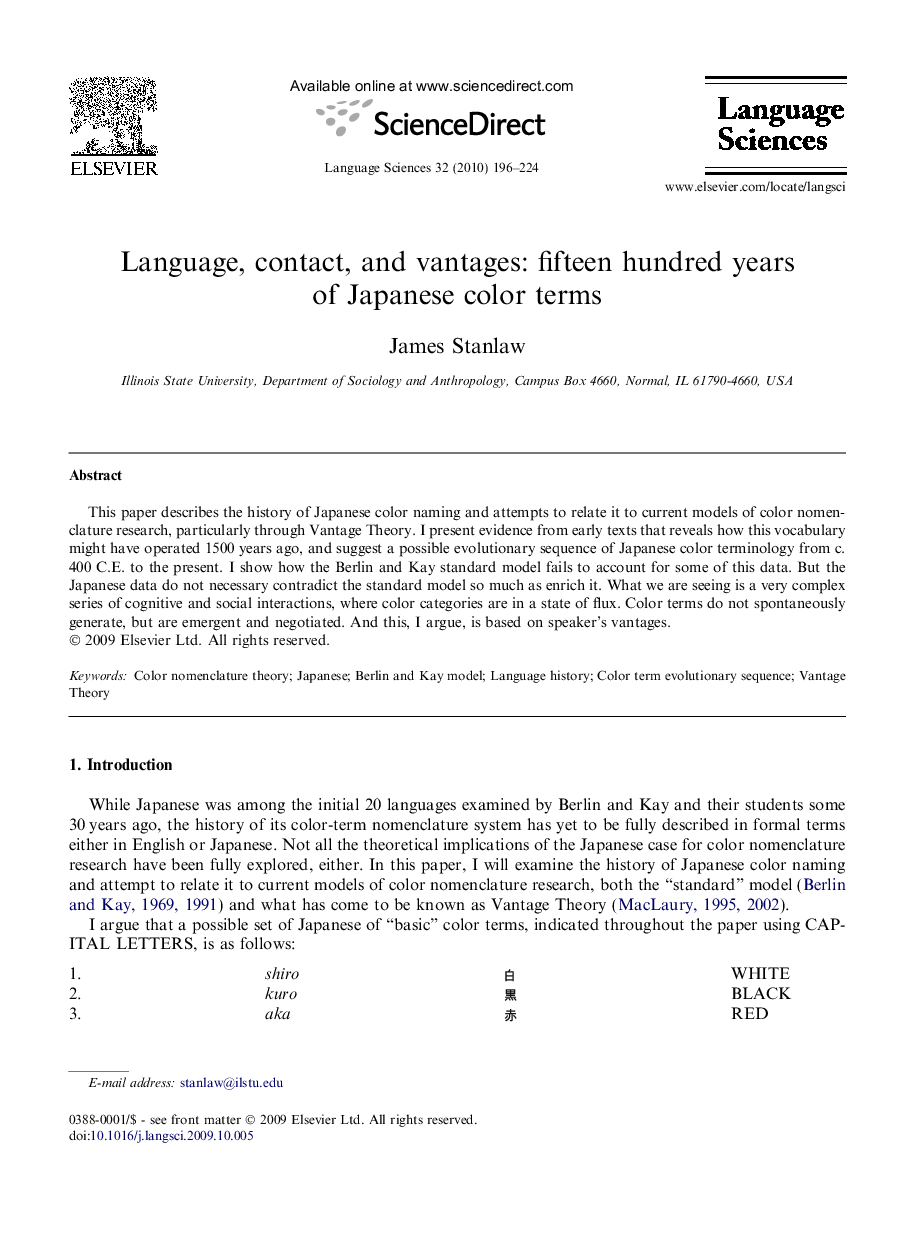| Article ID | Journal | Published Year | Pages | File Type |
|---|---|---|---|---|
| 1103449 | Language Sciences | 2010 | 29 Pages |
This paper describes the history of Japanese color naming and attempts to relate it to current models of color nomenclature research, particularly through Vantage Theory. I present evidence from early texts that reveals how this vocabulary might have operated 1500 years ago, and suggest a possible evolutionary sequence of Japanese color terminology from c. 400 C.E. to the present. I show how the Berlin and Kay standard model fails to account for some of this data. But the Japanese data do not necessary contradict the standard model so much as enrich it. What we are seeing is a very complex series of cognitive and social interactions, where color categories are in a state of flux. Color terms do not spontaneously generate, but are emergent and negotiated. And this, I argue, is based on speaker’s vantages.
